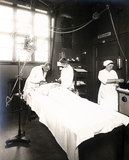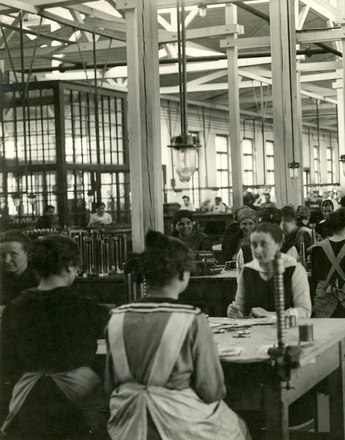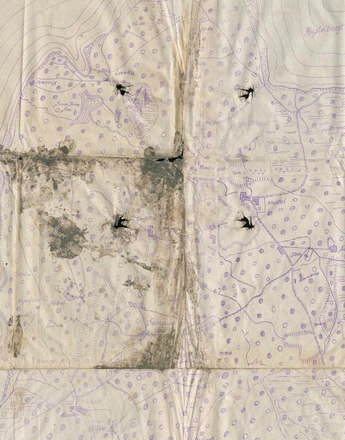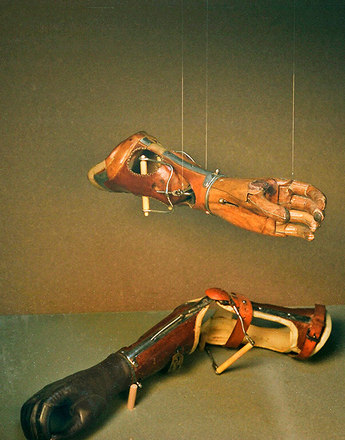The war offered some doctors a unique opportunity for large-scale testing of their theories and therapies, not all of which were particularly philanthropic and some of which were a torment for the patients. In view of the shortage of food in the hospitals, nutritionists in particular had a heyday.
The aim of the medical care was to release “cured” soldiers as quickly as possible. The hospitals soon turned into “health factories” based on the ideas of the physiologist Arnold Durig. Medical and administrative procedures followed a strict organisational and time management plan. Operations had to be completed as quickly as possible. Soldiers with simple bullet wounds or patients with infectious diseases like cholera or dysentery could indeed be released relatively healthy after a short period of treatment to make up for the enormous loss of life in the first months of the war.
Pictures at the time suggest that the soldiers were deliberately well-fed so that they could be sent back to the front. As the war progressed this became increasingly difficult to do, however. The head of the University Children’s Hospital Clemens Pirquet therefore developed a “rational food plan”, originally with the aim of providing sufficient nourishment as the supply situation worsened for “war children”. Pirquet’s nutritional system was based on the controversial thesis that fat could be more or less completely replaced by sugar and carbohydrates. The system was used from 1917 not only in children’s hospitals but also in military facilities.
The soldiers who survived were normally transferred to hospitals in their homelands after a few weeks of treatment – as can be seen, for example, from the medical record of Heinrich Schäffer, 30 years old, reserve officer, 52nd Infantry Regiment, 9th Company, from Hidas, Komitat Boronjo, Hungary. After being admitted to the 1st Surgical University Clinic on 14 December 1914 with a bullet wound in the right thigh and frostbite on the right foot, he was transferred “cured” on 23 April 1915 to the Red Cross hospital in Dombóvár. Another patient, Josef Skocila, born 1895 in Bistritz am Hostein (Bystřice pod Hostýnem), infantryman, 3rd Infantry Regiment, 3rd Company, was admitted to General Hospital I on 6 June 1915 with a bullet wound in the back. He had been wounded by shrapnel near Jaroslav, rescued from the field by stretcher bearers and bandaged in a field hospital. He was admitted to hospital in Jaroslav and Neusandez and transferred from there to Vienna. The x rays revealed that the bullet entered near the right hip bone and exited in the “sata region”, no projectile in the pelvic girdle and no major factures. He was released as “cured” on 19 June 1915.
Translation: Nick Somers
Eiselsberg, Anton: Wie wurde die klinische Chirurgie durch die Erfahrungen des Weltkrieges beeinflusst und welche praktischen Nutzanwendungen sollen daraus gezogen werden?, in: Pirquet, Clemens von (Hrsg.): Die Volksgesundheit im Krieg, Band 2, Wien/New Haven 1926, 166–178
Freund, Leopold: Die Aufgaben der Medizin im Weltkriege, Wien 1917
Hofer, Hans-Georg: Ernährungskrise, Krankheit, Hungertod: Wien (und Österreich-Ungarn) im Ersten Weltkrieg, in: Medizin in Gegenwart und Geschichte 31 (2013), 33–66
Hofer, Hans-Georg: Mobilisierte Medizin. Der Erste Weltkrieg und die Wiener Ärzteschaft, in: Pfoser, Alfred/Weigl, Andreas (Hrsg.): Im Epizentrum des Zusammenbruchs. Wien im Ersten Weltkrieg, Wien 2013, 302–309
Weigl, Andreas: Demographic Transitions Accelerated. Abortion, Body politics, and the End of Supra-Regional Labor Immigration in Post-War Austria, in: Bischof, Günter/Plasser, Fritz/Berger, Peter (Hrsg.): From Empire to Republic: Post-World War I Austria (Contemporary Austrian Studies 19), New Orleans 2010, 142–170
-
Chapters
- Modern weaponry and the slaughter of the first months of the war
- Hospital capacities, epidemic service and the rapid shortage of skilled medical staff
- Emergency hospitals in Vienna
- The university and other temporary hospitals
- Künstlerhaus and Secession as temporary war hospitals
- Wounded transports, food and care
- Cured and well-fed for the war









